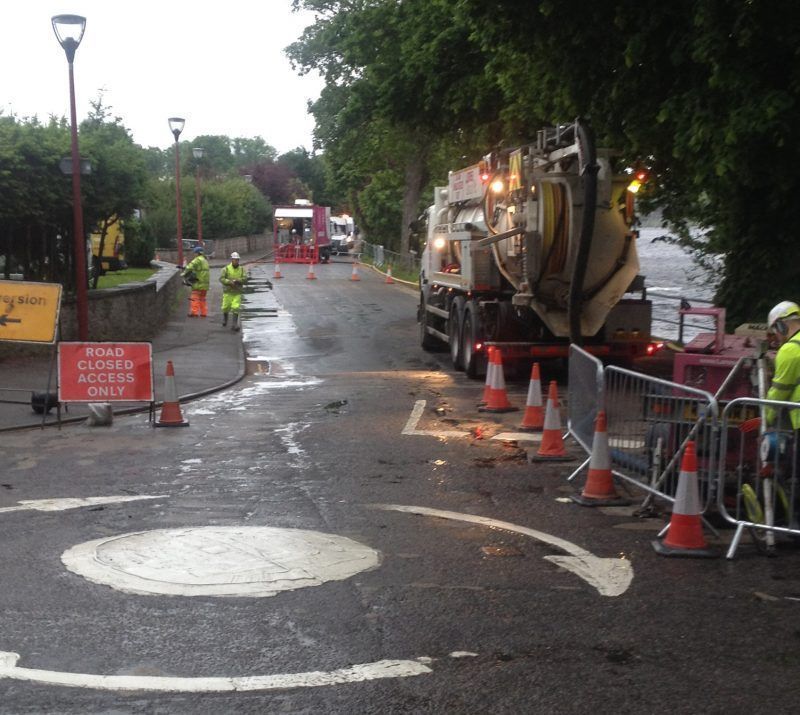UV lining team meets timeframe challenge to cure flooding

A sewer rehabilitation team from Lanes Group has met challenging working timeframes to complete a project that has reduced sewer flooding risks in a Scottish city.
The company was commissioned, by Scottish Water, to clean and line a combined sewer downstream of the Fisherman’s Car Park close to Inverness town centre, and right alongside the River Ness.
The 300mm diameter clay pipe had been identified as being at high risk of contributing to localised flooding during heavy rainfall, inconveniencing local people and creating a pollution risk for the river.
A major challenge was to complete all work within tight daily time frames to minimise their impact on nearby businesses and essential services. Lanes’ no-dig sewer rehabilitation expertise was key achieving this.
Ian Phillips, Project Manager for Scottish Water, said: “The use of specialist trenchless technology allowed the rehabilitation of this sewer to be completed quickly with minimal impact on the Ness Walk and Bishops Road areas.”
Jon Close, Senior Project Manager for Lanes Group’s Sewer Renovation Division, said: “The car park is close to the city centre and located near a hospital, a hospice and Inverness’s main theatre.
“Quite rightly, it was important that these facilities, as well as commuters, were not inconvenienced, so the traffic management needed to allow us to work could only be in place between 6.30pm and 11.30pm.
“This gave us a five-hour window to set up over-pumping to divert sewer flows, carry out our work, and then clear the site. Our teams had to work particularly efficiently and quickly, while maintaining the highest health and safety standards to achieve this.”
The main cause of the higher flood risk was tree roots infiltration into the sewer.
Over three evenings, drainage engineers from Lanes Aberdeen used high pressure water jetting equipment to cut away the roots, guided by HD video footage recorded by a CCTV drainage survey team using a robotic camera.
In some places, the tree roots had grown so large they had to be removed using a KA-TE cutter – a robotic cutting tool that can grind through wood, concrete and metal.
CCTV survey footage was used by Scottish Water to assess the condition of the sewer and decide how much of its length needed to be lined to strengthen it and prevent further root ingress.
Over three more evenings, a team from the Sewer Renovation Division then installed three liners – two 70m long, and the third 60m long – in three separate sections of the sewer pipe along Ness Walk and Bishops Road.
Ultra violet (UV) cure in place pipe (CIPP) lining was selected because it suited the very short working timeframe available.
Unlike conventional hot water CIPP lining, the UV lining equipment could be set up quickly, the lining process was fast, and no hazardous waste water was created, which largely eliminated the risk of polluting the River Ness.
With UV lining, a glass fibre liner is installed in the pipe and inflated against its sides. Then a UV light array is sent through the pipe to cure, or harden, resin impregnated in the liner.
Jon Close said: “Once the UV liners were installed, they could be cured within one hour. We could then cut out lateral connections with the KA-TE cutter. This meant each pipe could be lined and reinstated within the five-hour window.”








